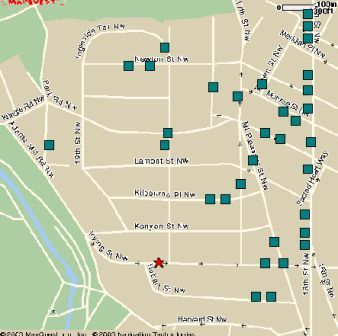So what does one do about
robberies? "More police" is not the answer. They can't be everywhere, all
the time, and the youths doing the robbing are smart enough to refrain
from doing anything when there's a uniform, or a squad car, in sight. They
wait until all is clear, then strike.
In the winter of 2003-2004,
an army of police occupied Mount Pleasant, in a reaction to the homicides
of October and November of 2003. The MPD "Weed and Seed" van parked on
Mount Pleasant Street, and a squad car was parked 24/7 around Lamont Park.
Did robberies decrease, due to this heavy and very visible police
presence? They did not! On the contrary, in the midst of this police
occupation, in January 2004, Mount Pleasant suffered more robberies than
in any other single month in the 52 months that I've been collecting data.
Throwing uniformed police at the robbery problem does not
work.
back to home
|
What does work? Looking at the robbery
counts, you can see how dramatically the rate changes. Sometimes sharp
decreases in robbery rates comes because the MPD succeeds in making an
arrest. That wave of robberies in late 2002 ended when they captured one
pair of robbers in Columbia Heights, and those two led them to a whole
gang, robbers who worked out of Silver Spring, and roamed up and down 16th
Street in search of victims. With the shutting down of that gang, the
number of robberies in a month dropped from 13 to one.
I have long
pressed for more effective detective work to track down and arrest
robbers. This is easily the best way to prevent future robberies, because
robbers do not do just one or two and quit, but continue their "career
choice" until they are stopped.
Unfortunately, the District does
not put sufficient resources into post-crime detective work, preferring
the politically popular, but ineffectual, approach of hiring more police
officers for patrol work. Our police district suffers over 1000 robberies
a year, and a little squad of five detectives is burdened with trying to
solve all of them. The District's rate of closing robberies by arrest is a
dismal 14%, where the national average for cities of over 250,000
population is 23%. We can, and should, do
better. |

